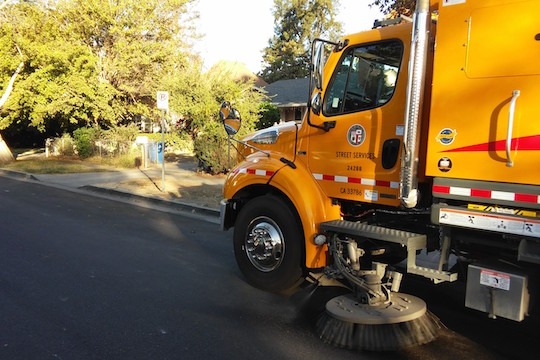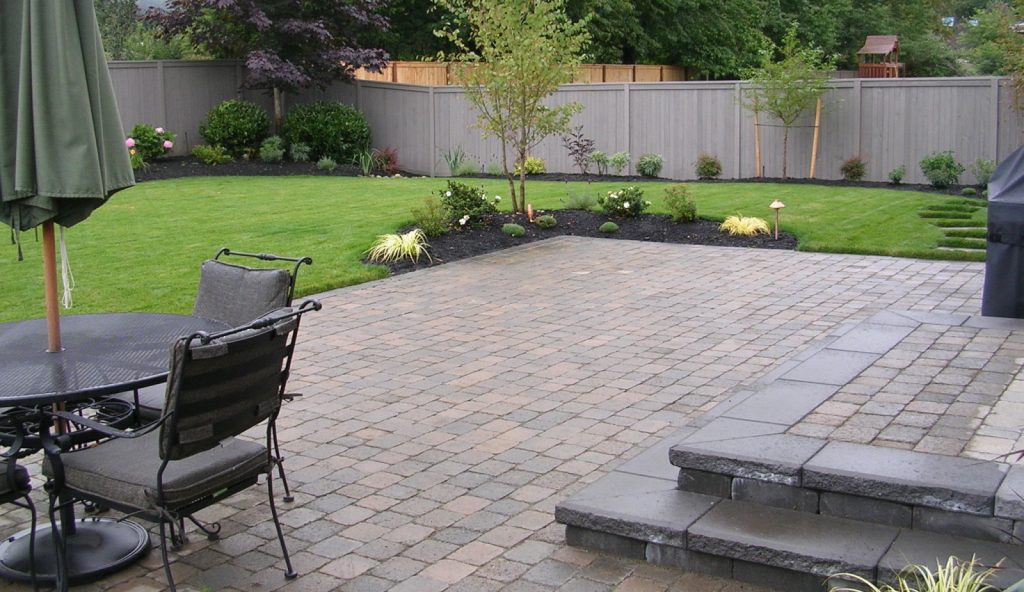The plans for a cooler, smarter system of streets and trees, is about balancing natural and human forces. Mistakes were made in the past, now corrected.
Tree-lined streets in Los Angeles – and any city with an appreciable degree of heat and periods of drought, for that matter – might be considered an expression for the familiar yin-yang symbol of symbiotic black and white, equal-sized blobs.
Changes are afoot in how the city manages its pavement-tree mix. The asphalt of 23,000 lane miles (plus another 800 miles of alleys) is essential to the city, connecting people and businesses and allowing the mobility that makes the city possible. In fact, mobility is the defining characteristic of the City of Angels. The trouble with all that pavement is two fold: one, it sheds rainwater that rolls into concrete culverts, the Arroyo Seco (“dry stream”) and out to the ocean where it never is available for times of water shortages; and two, the pavement holds solar heat that causes the infamous heat island effect into the night.
But trees, where they can be found, are what make the drive more pleasant, all the while serving multiple environmental roles, including how that will increasingly make living in Southern California possible in a changing climate. Trees absorb rainfall, cast shade on asphalt, and offer a pleasant destination for everyone moving about the city to places where they live, work and shop.
Trees and asphalt need each other to exist, to serve the LA population. It is, at its best, an asphalt urban forest. But it comes with a misguided past.
The history of trees in LA involves some non-native species, specifically the tall palm trees that are now, sadly, dying from pestilence (the South American palm weevil) and fungus (Fusaium). And for very solid environmental reasons, the municipally-maintained palms are not being replaced. Palms have always been good marketing for the city, featured in imagery going back to the late 19th century, but they don’t offer much shade, they drink up water needed by other vegetation, and they just don’t really belong in LA. Better to plant native oaks, black walnuts, Western Sycamore and California Bay trees (among others) that thrive in this climate.
Which is exactly what’s happening on a municipal scale. City streets, sidewalks and trees are not managed by outside, private asphalt contractors. The City of Los Angeles’ Bureau of Street Services (BSS) has entered a new era under new leadership in 2020 with a decidedly pro-environment approach to how streets are made (recycled waste tires and plastic bottles incorporated into the asphalt). BSS also has an urban forest initiative that includes a goal of planting 90,000 trees by 2021. In combination with the cool pavement program (painting streets white to reduce daytime solar gain), the city is working hard to create a more sustainable metropolis.
The BSS has its own, new logo to support these new initiatives, where the middle part of the word “street” – the word “tree” – is emphasized. And how different from the yin-yang symbol is that?


